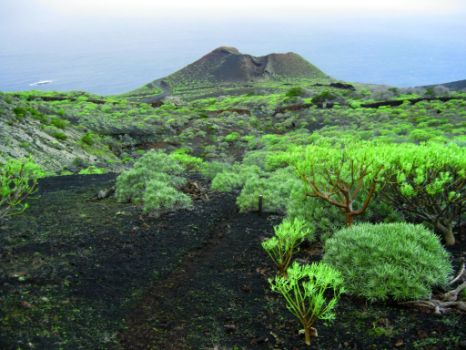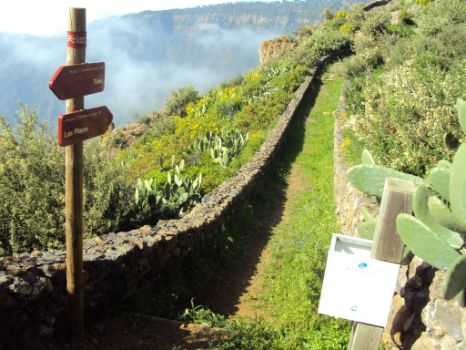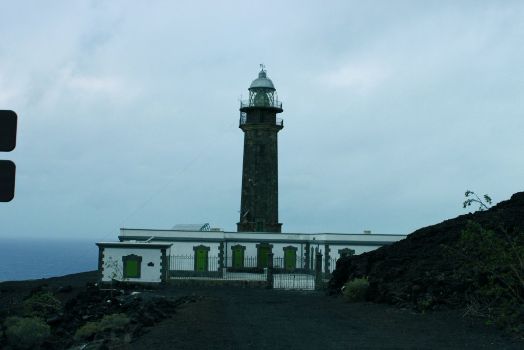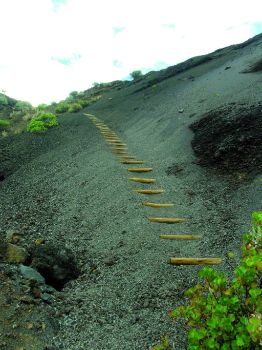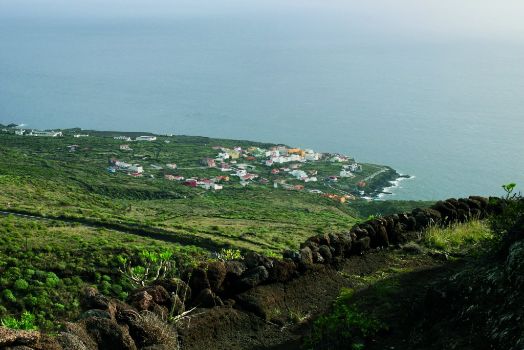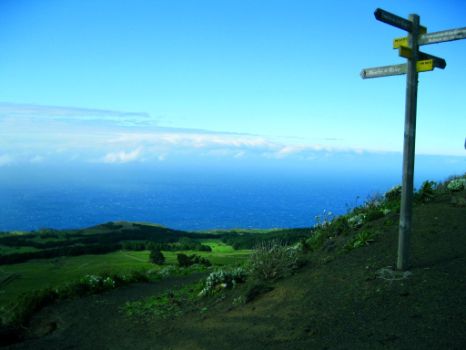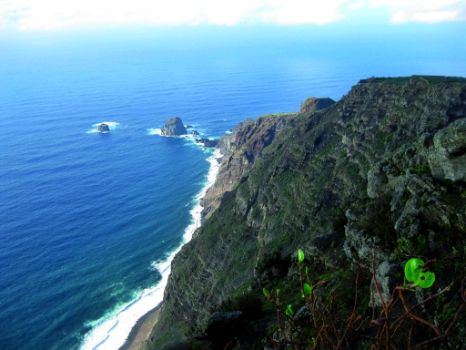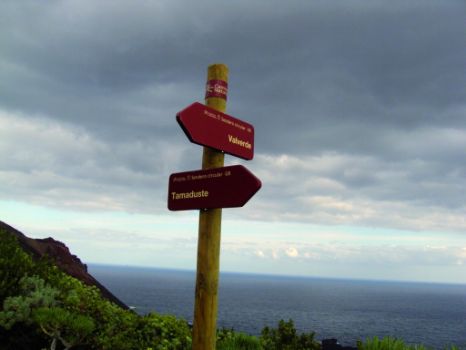Net of Natural
Trails

Traditional paths of El Hierro Nature Trail
Description
select a stage:

El Hierro is the smallest and westernmost of the seven islands of the Canary Islands. With an area of just 278 square kilometers, it has a rich natural heritage and a great diversity of ecosystems, and, in order to ensure their preservation, sixty per cent of its territory is protected by law. In the year 2000, UNESCO also recognized the value of this heritage by naming the smallest of the Canary Islands a Biosphere Reserve. This little treasure of biodiversity boasts an amazing diversity of landscapes, from excellent examples of juniper forests and thick Canary pine groves, to rocky areas and grand cliffs, not to mention important geological monuments and remains of lava flows that reveal its volcanic origin.
The Network of Protected Natural Areas of the Canary Islands has the best examples of vegetation on the island of El Hierro, such as fir and heath evergreen vegetation (fayal-brezal), cardonal (teasel forests) or tabaibal (tabaiba forest), also including a number of endemic species, as well a remarkable diversity of habitats that are home to various threatened species like the giant lizard of El Hierro.
With a coastal perimeter of just over 107 kilometers, the all-encompassing presence of the sea invites visitors to watch it from the many vantage points of the island. The wild and rugged coastline hides beaches and natural swimming pools not always easily accessible, and its waters conceal one of the most valuable sea beds of the Canary Islands, the Reserva Marina de La Restinga-Mar de las Calmas (Marine Reserve of La Restinga-Mar de las Calmas) whose purpose is the preservation of a wide variety of species living on it.
The landscapes of El Hierro also preserve important vestiges of the past of the island, such as caves and enclosures used by the early settlers of the island, the Bimbaches, who left their imprint on numerous archaeological sites scattered throughout the island, evincing the evolution of the different lifestyles of mankind in its interaction with the natural environment over the centuries.
In recent years, El Hierro has become an unrivalled destination for people interested in water sports in a natural environment. Dozens of traditional roads and paths, connecting villages, can be used for hiking. Until recent decades, the inhabitants of El Hierro used the dry stone walkways of the island to work in the fields or to move from one house to another depending on seasonal changes. The El Hierro Nature Trail takes advantage of some of those traditional roads and paths, incorporating them into two main large distance trails: GR-131, that crosses the island in the middle from north to south, and a circular trail that makes it possible for hikers to tour the entire perimeter of the island, offering a unique opportunity to become fully acquainted with the enormous natural and cultural wealth of El Hierro.



